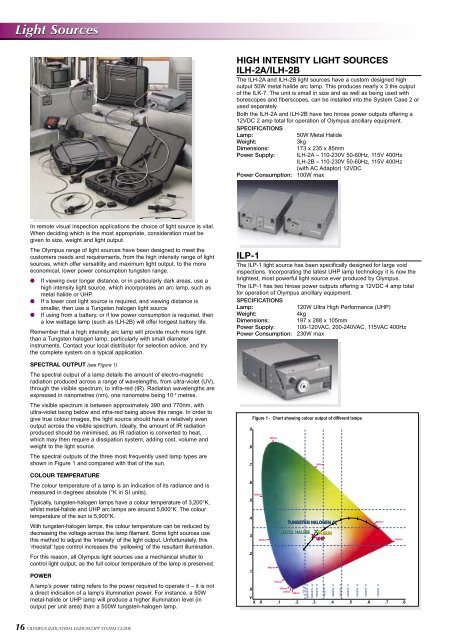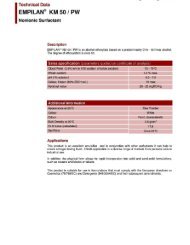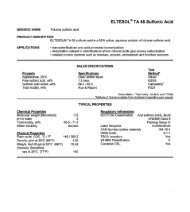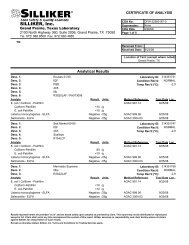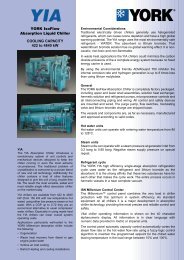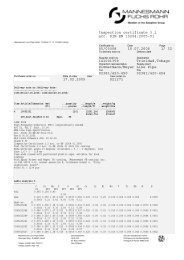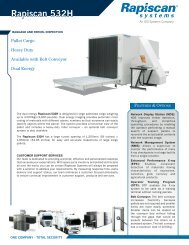General Info - Salvex
General Info - Salvex
General Info - Salvex
You also want an ePaper? Increase the reach of your titles
YUMPU automatically turns print PDFs into web optimized ePapers that Google loves.
Light Sources<br />
HIGH INTENSITY LIGHT SOURCES<br />
ILH-2A/ILH-2B<br />
The ILH-2A and ILH-2B light sources have a custom designed high<br />
output 50W metal halide arc lamp. This produces nearly x 3 the output<br />
of the ILK-7. The unit is small in size and as well as being used with<br />
borescopes and fiberscopes, can be installed into the System Case 2 or<br />
used separately<br />
Both the ILH-2A and ILH-2B have two hirose power outputs offering a<br />
12VDC 2 amp total for operation of Olympus ancillary equipment.<br />
SPECIFICATIONS<br />
Lamp:<br />
50W Metal Halide<br />
Weight:<br />
3kg<br />
Dimensions: 173 x 235 x 85mm<br />
Power Supply: ILH-2A – 110-230V 50-60Hz, 115V 400Hz<br />
ILH-2B – 110-230V 50-60Hz, 115V 400Hz<br />
(with AC Adaptor) 12VDC<br />
Power Consumption: 100W max<br />
In remote visual inspection applications the choice of light source is vital.<br />
When deciding which is the most appropriate, consideration must be<br />
given to size, weight and light output.<br />
The Olympus range of light sources have been designed to meet the<br />
customers needs and requirements, from the high intensity range of light<br />
sources, which offer versatility and maximum light output, to the more<br />
economical, lower power consumption tungsten range.<br />
● If viewing over longer distance, or in particularly dark areas, use a<br />
high intensity light source, which incorporates an arc lamp, such as<br />
metal halide or UHP.<br />
● If a lower cost light source is required, and viewing distance is<br />
smaller, then use a Tungsten halogen light source<br />
● If using from a battery, or if low power consumption is required, then<br />
a low wattage lamp (such as ILH-2B) will offer longest battery life.<br />
Remember that a high intensity arc lamp will provide much more light<br />
than a Tungsten halogen lamp, particularly with small diameter<br />
instruments. Contact your local distributor for selection advice, and try<br />
the complete system on a typical application.<br />
SPECTRAL OUTPUT (see Figure 1)<br />
The spectral output of a lamp details the amount of electro-magnetic<br />
radiation produced across a range of wavelengths, from ultra-violet (UV),<br />
through the visible spectrum, to infra-red (IR). Radiation wavelengths are<br />
expressed in nanometres (nm), one nanometre being 10 –9 metres.<br />
The visible spectrum is between approximately 390 and 770nm, with<br />
ultra-violet being below and infra-red being above this range. In order to<br />
give true colour images, the light source should have a relatively even<br />
output across the visible spectrum. Ideally, the amount of IR radiation<br />
produced should be minimised, as IR radiation is converted to heat,<br />
which may then require a dissipation system, adding cost, volume and<br />
weight to the light source.<br />
The spectral outputs of the three most frequently used lamp types are<br />
shown in Figure 1 and compared with that of the sun.<br />
COLOUR TEMPERATURE<br />
The colour temperature of a lamp is an indication of its radiance and is<br />
measured in degrees absolute (°K in SI units).<br />
Typically, tungsten-halogen lamps have a colour temperature of 3,200°K,<br />
whilst metal-halide and UHP arc lamps are around 5,600°K. The colour<br />
temperature of the sun is 5,900°K.<br />
With tungsten-halogen lamps, the colour temperature can be reduced by<br />
decreasing the voltage across the lamp filament. Some light sources use<br />
this method to adjust the ‘intensity’ of the light output. Unfortunately, this<br />
‘rheostat’ type control increases the ‘yellowing’ of the resultant illumination.<br />
For this reason, all Olympus light sources use a mechanical shutter to<br />
control light output, as the full colour temperature of the lamp is preserved.<br />
POWER<br />
A lamp’s power rating refers to the power required to operate it – it is not<br />
a direct indication of a lamp’s illumination power. For instance, a 50W<br />
metal-halide or UHP lamp will produce a higher illumination level (in<br />
output per unit area) than a 500W tungsten-halogen lamp.<br />
ILP-1<br />
The ILP-1 light source has been specifically designed for large void<br />
inspections. Incorporating the latest UHP lamp technology it is now the<br />
brightest, most powerful light source ever produced by Olympus.<br />
The ILP-1 has two hirose power outputs offering a 12VDC 4 amp total<br />
for operation of Olympus ancillary equipment.<br />
SPECIFICATIONS<br />
Lamp:<br />
120W Ultra High Performance (UHP)<br />
Weight:<br />
4kg<br />
Dimensions: 197 x 288 x 105mm<br />
Power Supply: 100-120VAC, 200-240VAC, 115VAC 400Hz<br />
Power Consumption: 230W max<br />
.9<br />
.8<br />
.7<br />
.6<br />
.5<br />
.4<br />
.3<br />
.2<br />
.1<br />
.0<br />
Figure 1 - Chart showing colour output of different lamps<br />
Y<br />
X<br />
500nm<br />
490nm<br />
520nm<br />
480nm<br />
470nm<br />
450nm<br />
430nm<br />
380nm<br />
∞ <br />
20000 0 K<br />
10000 0 K<br />
6500 0 K<br />
550nm<br />
TUNGSTEN HALOGEN<br />
X<br />
METAL HALIDE XX<br />
SUN<br />
X<br />
UHP<br />
4800 0 K<br />
3600 0 K<br />
.0 .1 .2 .3 .4 .5 .6 .7 .8<br />
2854 0 K<br />
2360 0 K<br />
1900 0 K<br />
1500 0 K<br />
<br />
<br />
<br />
<br />
<br />
<br />
<br />
<br />
<br />
600nm<br />
<br />
1000 0 K<br />
700nm<br />
16 OLYMPUS INDUSTRIAL ENDOSCOPY SYSTEM GUIDE


